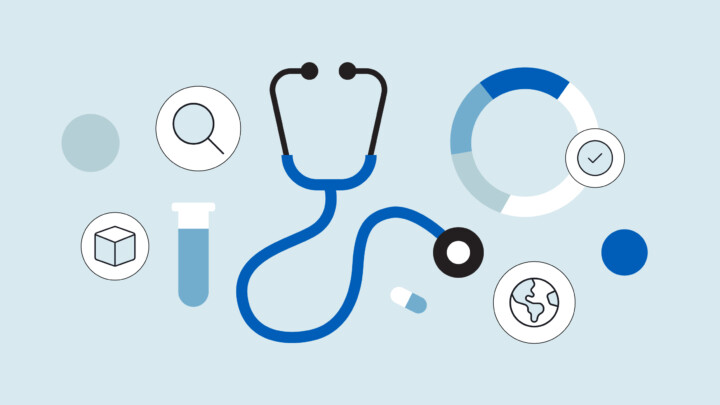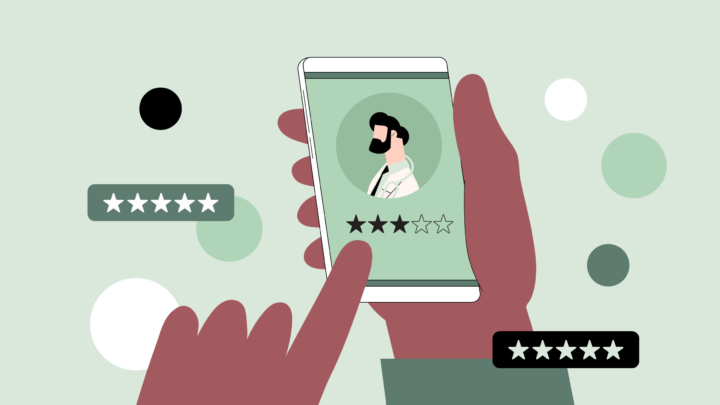
Healthcare consumerism is shaping how patients seek care. Empowered by greater access to health information, digital tools, and online reviews, patients now expect convenience, transparency, personalized experiences and high-quality service from their doctors. Patients are “more motivated than ever” to choose healthcare options based on experience, quality of care, and value, according to a 2024 trend report from McKinsey & Company.
In fact, patients now have expectations that mirror those in other industries, increasingly applying the same expectations to medical care as they do to booking a hotel in a strange city or buying a new car. Those who engage in healthcare consumerism see medical care as another service and expect high levels of customer service and the use of new technologies to provide convenience and transparency.
Physicians needing to attract more patients must take into account these high expectations, honing their communication skills, embracing technology, and remaining responsive to feedback, all while maintaining clinical excellence. While this can pose challenges, it also presents opportunities to build stronger patient relationships and deliver more personalized, patient-centered care.
What is healthcare consumerism?
Healthcare consumerism refers to the trend of patients acting as informed consumers in their medical care—seeking transparency, choice, convenience, and value in how care is delivered and accessed. The term has been around since the 1930s, but new social and technological trends have placed a recent focus on healthcare consumerism. As the healthcare industry shifts towards a value-based and patient-centric system, consumerism has become more common.
Below are examples of healthcare consumerism:
- Online appointment scheduling: many patients expect to visit a practice or clinic’s website and schedule an appointment, fill out patient forms online so they don’t have to arrive early, and easily reschedule routine appointments when their plans change. Patients may avoid providers who require phone calls for appointments. According to KPMG’s Healthcare 2030 forecast, 58% of millennials and 64% of Gen Xers would switch providers to access online booking.
- Telehealth and virtual care: the demand for telehealth has grown rapidly since the beginning of the COVID-19 pandemic. Patients want to be able to make remote appointments for things which don’t require the physical presence of a doctor.
- Patient portals: many practices now have patient portals that allow patients to check their own lab results, easily pay bills, and communicate with providers through instant messaging.
- Shared decision making: this is a key part of patient-centered care where treatment plans are discussed and clinical decisions are made together with patients and their caregivers.
- Price transparency tools: online tools such as Healthcare Bluebook and GoodRx allow patients to check prices before making an appointment or to shop around to find the cheapest pharmacy.
5 key drivers of healthcare consumerism
Here are some of the key drivers in the expansion of healthcare consumerism trends:
Increased access to medical information
The internet provides patients with a wealth of medical information, often on physicians’ websites. Patients can now access medical information without having to go through their physician, and are often better empowered and informed as a result.
However, not all information on the internet is accurate. As anyone can post on the internet, patients may receive information from people other than qualified medical providers, such as AI symptom checkers.
Rising out-of-pocket costs
Some patients engage in healthcare consumerism in response to rising out-of-pocket costs. “With total healthcare spending reaching around $4.5 trillion in 2022, the financial burden on patients can be overwhelming, often leading to difficult choices between cost-effective and outcome-effective treatment options,ˮ a general practitioner on Sermo notes.
63% of physicians on Sermo now say they consider the cost of care when making decisions, and 23% do so all of the time.
Some physicians feel discouraged. “Cost of healthcare in the US per capita is so much more than in other countries – and not all of that is legitimate,” an OBGYN writes on Sermo. “It’s not sustainable.ˮ
However, others don’t feel that costs are such a large concern. “I try to review cost of care with patients on a daily basis to ensure they understand their options,” an internist on Sermo notes. “Often I find that tests or medications that arenʼt covered by insurance are affordable for self pay.ˮ
Demand for price transparency
As patients pay a higher price out-of-pocket, more are expecting price transparency. This has led to a strong movement against “overly complicated” hospital bills. People may need to know the cost of a non-emergency procedure up front so they can budget for it.
They also are more inclined to shop around to find the best value, and may not always understand that choosing the cheapest provider could result in substandard care.
Convenience-driven care
Modern patients have busy lives and value convenience. Instead of trekking to a doctor’s office, patients are going to retail clinics, walk-in clinics, and direct primary care. For example, between 2018 and 2022 the percentage of adult vaccinations administered at pharmacies in urban parts of the United States increased from about 54% to 86%.
Value-based care and patient-centered models
Both value-based care and patient-centered models drive healthcare consumerism. Value-based care is a system in which insurers and employers incentivize employees to lead healthier lifestyles and work with providers to encourage wellness. It also means actively encouraging the use of cost-effective services.
Patient-centered care models encourage shared decision making, improved cooperation between providers, and improved agency for both patients and family caregivers. Patient-centered models take into account personal demographics, including age.
Zoomers (those born between 1996 and 2010) for example, often turn to social media for information where there is high misinformation risk, and providers need to follow them there according to a report from Kinsey & Company. They’re also more likely to switch providers, even taking into account changing life circumstances such as leaving home and moving for college, which makes patient retention more challenging.
Acknowledging that many previous assumptions about healthcare consumers are now outdated, physicians must adapt to evolving patient expectations. By aligning with these new preferences and needs, physicians can create more meaningful engagement throughout the patient journey and drive better outcomes.
Healthcare consumerism pros and cons
Healthcare consumerism is fundamentally transforming the patient-provider relationship. It empowers patients to make informed healthcare decisions while introducing new challenges for both patients and physicians.
Pros for physicians
Healthcare consumerism encourages individuals to take active roles in their care, and physicians benefit from working with patients who research their conditions, ask informed questions, and demonstrate greater commitment to treatment plans. An increased focus on value-based care encourages continuous quality improvement, professional development, and adoption of best practices that benefit both patients and healthcare systems.
Healthcare practices are becoming more efficient. Online scheduling, patient portals, and digital communication tools streamline administrative processes, allowing physicians to dedicate more time to clinical care.
The competitive healthcare marketplace encourages continuous innovation. This environment fosters professional growth and keeps practices current with evolving medical standards and patient expectations.
Cons for physicians
The rise in digital information and health tools has created challenges. Not all patients have equal access to these health tools or information literacy skills.
Physicians increasingly spend valuable consultation time correcting misinformation patients encounter online or through social media. Additionally, the democratization of health information can undermine physician expertise when patients challenge medical recommendations based on incomplete or inaccurate online research. Physicians may feel pressured to accommodate patient preferences that contradict medical recommendations, potentially compromising care quality to maintain positive reviews or patient retention.
Healthcare consumerism demands greater transparency in pricing, outcomes reporting, and service descriptions, creating mounting administrative responsibilities for physicians. They may need to spend more time discussing treatment costs, insurance coverage, and alternative options with patients.
Pros for patients
Patients now have unprecedented access to health information, enabling more informed decision-making about their care. They’re more easily able to communicate with their healthcare providers, access test results, and manage their care conveniently through digital health platforms.
Healthcare consumerism may facilitate value-based care, driving improvements like efficiency, better communication systems, and more convenient service delivery options. Patients are benefiting from consumer-focused care that caters to their preferences, cultural needs, and lifestyle considerations. Increased price transparency and competition among healthcare providers can lead to more affordable care options and better value for healthcare spending.
Cons for patients
Not all patients can utilize digital health tools and information. For those who do, they may not be able to distinguish reliable medical information from misinformation.
Healthcare consumerism often shifts financial responsibility to patients through higher deductibles, copayments, and out-of-pocket expenses. This financial burden can create barriers to necessary care and force patients to make difficult choices between their health and financial stability. Some patients may delay or avoid necessary medical care due to concerns about costs, complexity of choices, or information overload.
Those who can afford care won’t necessarily always receive satisfactory treatment. “Those who have money will seek treatment, but that doesn’t mean they will be treated adequately, given the blatant healthcare consumerism imposed by multinational pharmaceutical and biomedical companies,” writes one orthopedic specialist on Sermo.
How healthcare consumerism is affecting physicians
“The consumer mentality has only a limited place in medicine, if at all,” writes an internist on Sermo. “In consumerism, the customer is always right. In medicine sometimes and often times the correct response is ‘NO’. This flies in the face of consumerism and unless patients and society want to give up medicine to machines, computers and algorithms and/or completely insulate us from the liability of giving them what they want. Consumerism needs to be removed from healthcare.ˮ
This perspective underscores the friction between patient expectations and medical judgment. Yet, physicians must understand how to navigate healthcare consumerism to provide the best care for their patients. Below are several key areas in which physicians are being affected:
Addressing misinformation: a growing burden
New concerns around misleading information on the internet seem to be having a significant impact. A small sample of U.S. physicians on Sermo responded to a poll asking how healthcare consumerism most impacted their practices in the last year: “More time spent addressing misinformation from online sources” received the highest amount of votes, from 65% of the respondents.
Challenges in patient retention
In the past, family doctors often attracted a lot of loyalty, but with consumerist trends, families may start shopping around. Patient retention becomes harder because patients are less likely to stay with a provider out of familiarity and inertia, as has often been the case. Another impact on patient retention is insurance marketplaces and a growing awareness of consumer choice in insurance. When a patient’s insurance is not provided by an employer, patients may change plans more frequently, resulting in a familiar provider suddenly being out-of-network.
Managing cost-conscious patients
“Today, with high deductibles and co-pays, patients are increasingly cost-conscious,” writes a urologist on Sermo. “Healthcare professionals must provide transparent pricing information, offer competitive fees, and clearly demonstrate the value of their services.ˮ
Doctors also may have difficulty explaining why a patient really needs a more expensive course of treatment. While it has long been the case that the value of more expensive treatments must be justified to insurance companies and other payers, it has become more and more necessary to explain the choice to patients as well.
Adopting digital solutions
Demand for digital solutions like online scheduling, telemedicine, and patient portals also poses a challenge for physicians. Staying competitive in this evolving environment requires that physicians invest in and use current tools. Online scheduling is essential, but patient portals are also becoming an expectation, granting patients access to their own records and charts. “Full patient access to EHRs is a two-edged sword,” according to one intensive care doctor on Sermo. “Errors can be both recognized & corrected OR createdˮ. That being said, savvy patients with access to their own information can better participate in decision making, especially when managing chronic conditions.
Balancing cost, efficiency and access to care
Physicians must balance quality care with cost control and efficiency. A Sermo poll found that managing patient expectations on speed and quality (34%) is the top challenge in value-based care. Balancing outcomes with cost-effectiveness ranks second (29%).
Patients may in some cases even have unrealistic expectations. For example, a patient who reads about a new treatment in trials may demand that it be made available to them even if the trials are not complete. At the same time, they expect costs to be controlled, resulting in a conflict for physicians.
Some physicians are responding to these challenges by moving to concierge medicine. These physicians see a benefit in the ability to build stronger patient relationships with a smaller workload. A poll of physicians on Sermo found that 50% of respondents were “cautiously optimistic” about concierge medicine as a response to healthcare consumerism, while 29% feel negatively, 16% hold a positive view, and 14% feel neutral.
“Concierge medicine can offer personalized and timely healthcare services, often improving patient satisfaction and outcomes,” according to a nephrologist on Sermo. “However, it may also create disparities in access to care, as it is typically more expensive and can be out of reach for many people.ˮ While concierge medicine can be a good option for patients fortunate enough to be able to afford it, it can potentially exacerbate shortages as physicians move to concierge models and treat fewer patients. This can, in turn, become a burden on physicians who prefer to treat patients in more traditional environments, who then become overloaded.
The takeaway
While some physicians may wish otherwise, it seems healthcare consumerism is here to stay. It is reshaping patient expectations, as they demand more convenience, transparency, and technology. This empowers patients, but can burden physicians with increased administrative loads and financial pressure, as well as the need to address the spread of misinformation.
Sermo provides a place where physicians can engage critically with this and many other topics growing in the healthcare space. Join our community of over 1 million verified doctors to share your insights and strategies to balance innovation and quality, equitable care.















